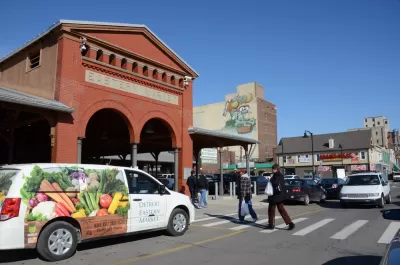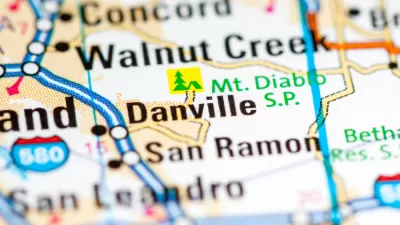Six tips for ensuring that new placed-based funding programs, such as the Build Back Better Regional Challenge, achieve the full potential of a new era of place-based federal investment.

The series of federal stimulus, infrastructure, and inflation bills that have been signed into law by presidents Trump and Biden since the beginning of the pandemic is unprecedented in many ways. According to a recent report by the Brookings Institution, the rare opportunity presented by this spate of new federal investments includes a new focus on place-based initiatives.
“Across the federal government, agencies are launching larger-scale, more in-depth initiatives for accelerating innovation, optimizing supply chains, mitigating climate change, and addressing demographic and geographic inequities,” write Joseph Parilla and Glencora Haskins.
The article cites the Build Back Better Regional Challenge (BBBRC) as the case in point. The Biden administration announced the winners of the BBBRC’s competitive grant process in September 2022, funding 21 projects in 24 states with grants between $25 million and $65 million. To describe the intended focus and effect of the BBBRC, Parilla and Haskins write: “These investments will support the local development of nationally critical technology clusters, and attempt to do so in ways that deliver economic opportunity to traditionally underserved people and communities.”
The article provides six policy design “keys” to unlock the potential of new place-based funding programs, informed by insights from the BBBRC so far, as listed below (with more details in the source article):
- Macro-relevant
- Micro-based
- Network-focused
- Competition-driven
- Leaning-enabled
- Rick-adjusted
The list and the article is taken from a full report published by Brookings in November [pdf].
FULL STORY: Six keys to unlocking a new era of place-based federal investment

Alabama: Trump Terminates Settlements for Black Communities Harmed By Raw Sewage
Trump deemed the landmark civil rights agreement “illegal DEI and environmental justice policy.”

Planetizen Federal Action Tracker
A weekly monitor of how Trump’s orders and actions are impacting planners and planning in America.

The 120 Year Old Tiny Home Villages That Sheltered San Francisco’s Earthquake Refugees
More than a century ago, San Francisco mobilized to house thousands of residents displaced by the 1906 earthquake. Could their strategy offer a model for the present?

In Both Crashes and Crime, Public Transportation is Far Safer than Driving
Contrary to popular assumptions, public transportation has far lower crash and crime rates than automobile travel. For safer communities, improve and encourage transit travel.

Report: Zoning Reforms Should Complement Nashville’s Ambitious Transit Plan
Without reform, restrictive zoning codes will limit the impact of the city’s planned transit expansion and could exclude some of the residents who depend on transit the most.

Judge Orders Release of Frozen IRA, IIJA Funding
The decision is a victory for environmental groups who charged that freezing funds for critical infrastructure and disaster response programs caused “real and irreparable harm” to communities.
Urban Design for Planners 1: Software Tools
This six-course series explores essential urban design concepts using open source software and equips planners with the tools they need to participate fully in the urban design process.
Planning for Universal Design
Learn the tools for implementing Universal Design in planning regulations.
Clanton & Associates, Inc.
Jessamine County Fiscal Court
Institute for Housing and Urban Development Studies (IHS)
City of Grandview
Harvard GSD Executive Education
Toledo-Lucas County Plan Commissions
Salt Lake City
NYU Wagner Graduate School of Public Service





























